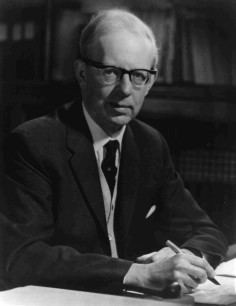Institutions University of Leeds Notable awards Royal Society Role Physicist | Name Edmund Stoner Known for Ferromagnetism | |
 | ||
Born Edmund Clifton Stoner
2 November 1899
Surrey, England ( 1899-11-02 ) Alma mater University of Cambridge Died December 27, 1968, Leeds, United Kingdom Education Bolton School, University of Cambridge | ||
Edmund Clifton Stoner FRS (2 October 1899 – 27 December 1968) was a British theoretical physicist. He is principally known for his work on the origin and nature of itinerant ferromagnetism (the type of ferromagnetic behaviour associated with pure transition metals like cobalt, nickel, and iron), including the collective electron theory of ferromagnetism and the Stoner criterion for ferromagnetism.
Contents
Biography
Stoner was born in Esher, Surrey, the son of cricketer Arthur Hallett Stoner. He won a scholarship to Bolton School (1911–1918) and then attended University of Cambridge in 1918, graduating in 1921. After graduation, he worked at the Cavendish Laboratory on the absorption of X-rays by matter and electron energy levels; his 1924 paper on this subject prefigured the Pauli exclusion principle. Stoner was appointed a Lecturer in the Department of Physics at the University of Leeds in 1932, becoming Professor of Theoretical Physics there in 1939. He did some early work in astrophysics and computed a limit for the mass of white dwarf stars in 1930. Most of his research, however, was on magnetism, where, starting in 1938, he developed the collective electron theory of ferromagnetism. He retired in 1963.
He is also known for his discovery of the Chandrasekhar limit before S. Chandrasekhar.
Awards
The E C Stoner building at the University of Leeds is named after him.,
He was elected a Fellow of the Royal Society in May 1937.
Stoner had been diagnosed with diabetes in 1919. He controlled it with diet until 1927, when insulin treatment became available.
Stoner model of ferromagnetism
Electron bands can spontaneously split into up and down spins. This happens if the relative gain in exchange interaction (the interaction of electrons via the Pauli exclusion principle) is larger than the loss in kinetic energy.
where
